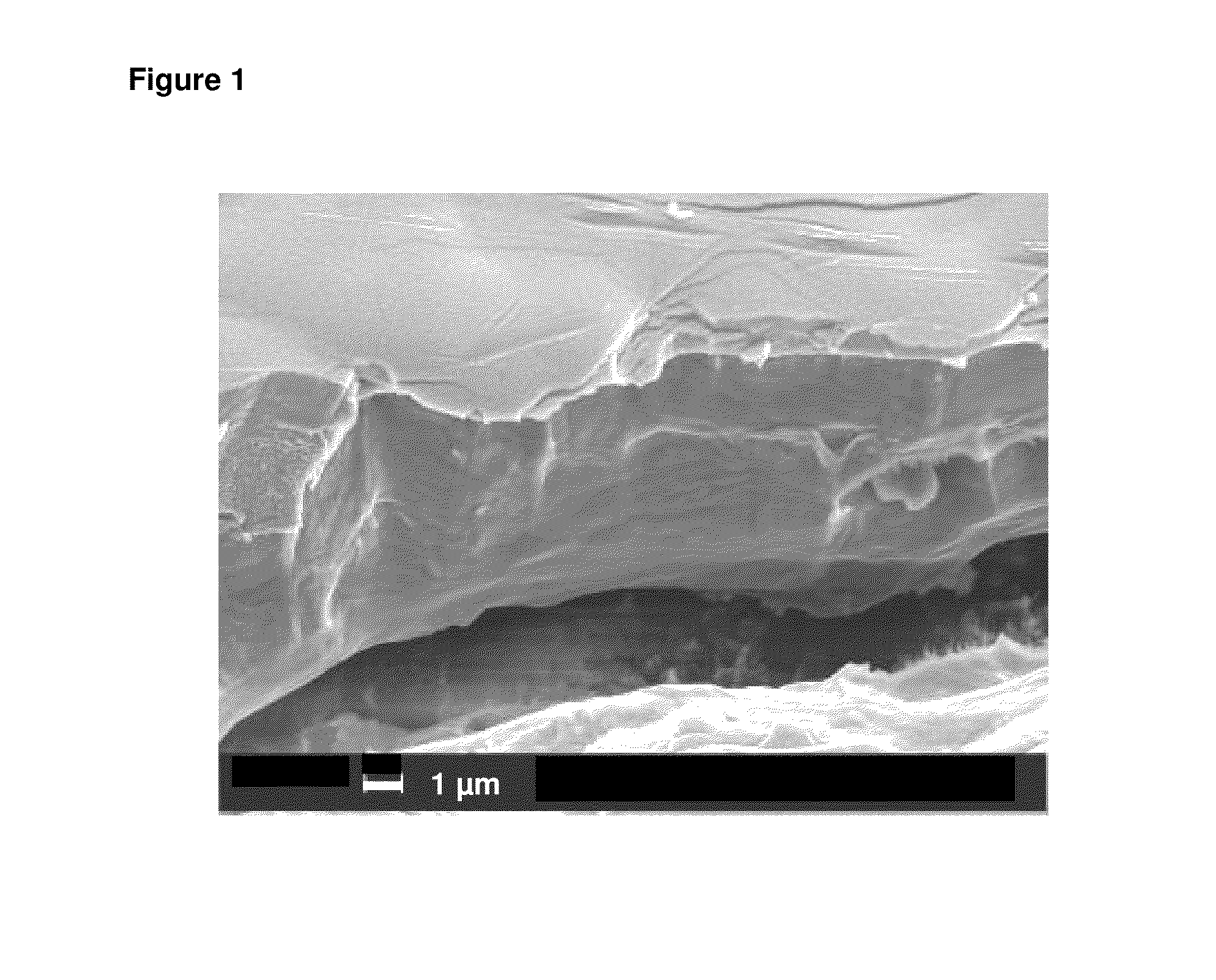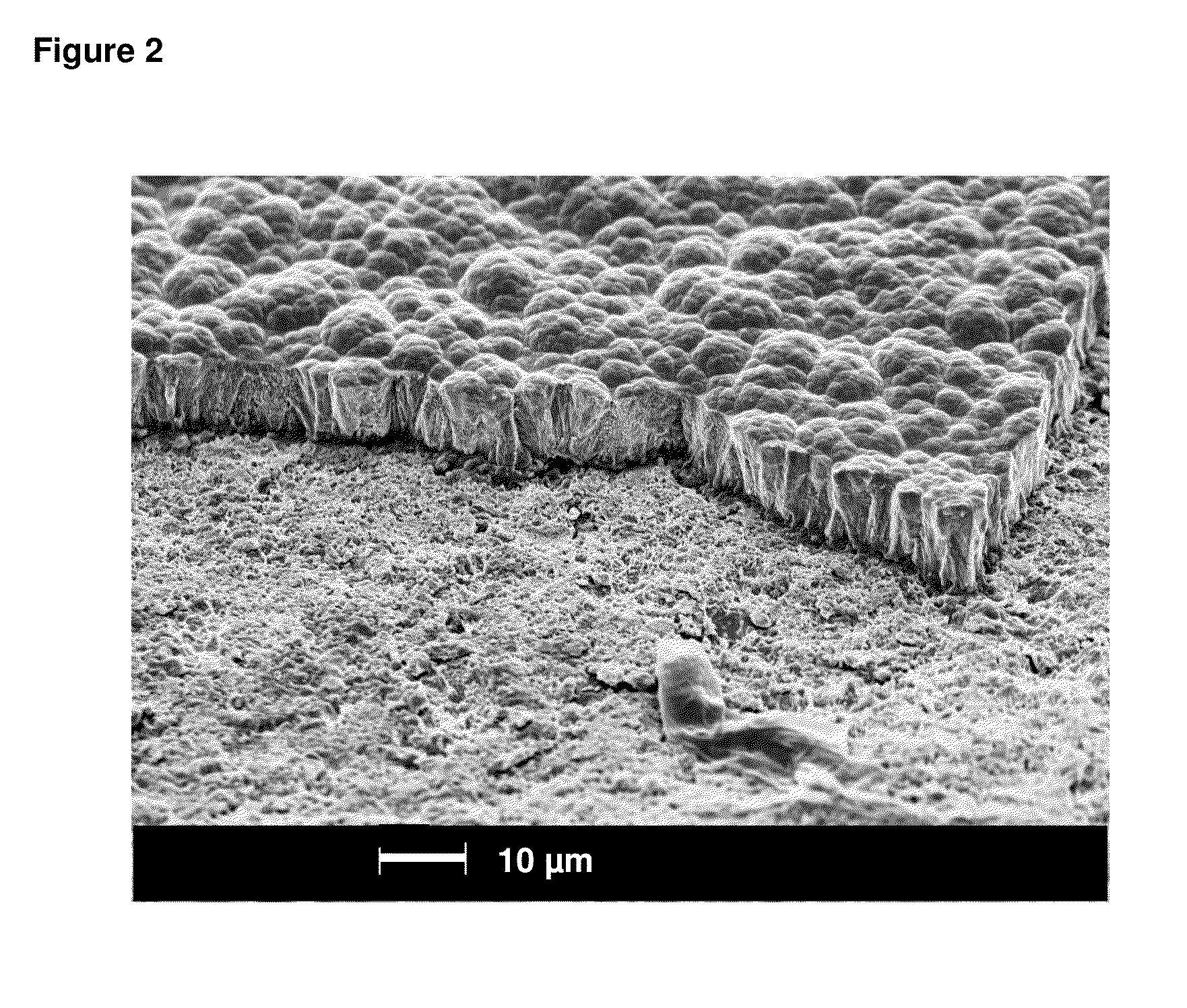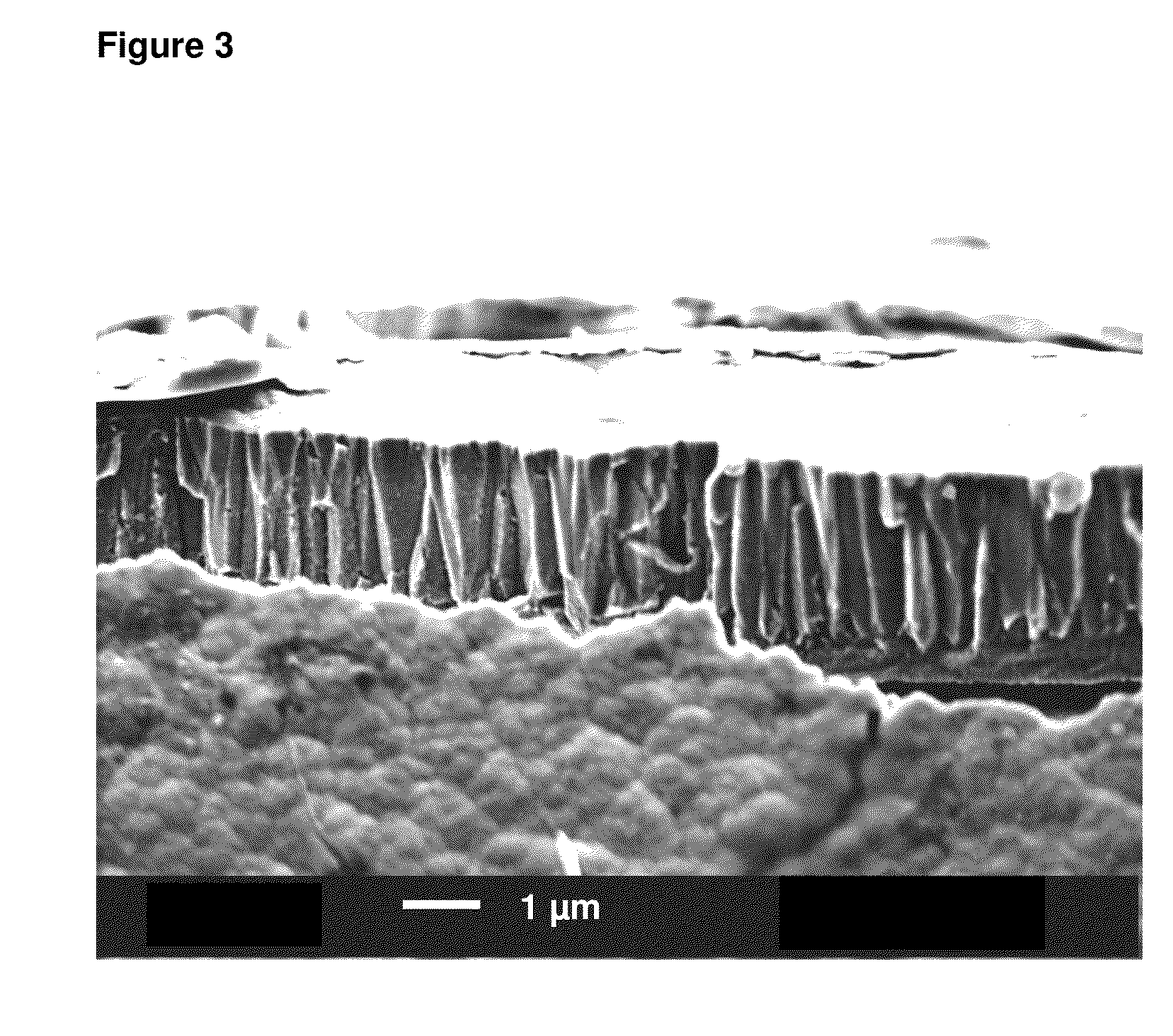Method for electroless nickel-phosphorous alloy deposition onto flexible substrates
a nickel-phosphorous alloy and flexible substrate technology, applied in the direction of resistive material coating, liquid/solution decomposition chemical coating, superimposed coating process, etc., can solve the problems of toxic heavy metal ions in the plating bath, easy to undetectable crack formation of nickel-phosphorous alloy layers,
- Summary
- Abstract
- Description
- Claims
- Application Information
AI Technical Summary
Benefits of technology
Problems solved by technology
Method used
Image
Examples
example 1
Blank Flexible Substrate without Nickel Phosphorous Alloy Layer
[0061]The flexible substrate material (polyimide foil) having a copper circuitry attached to both sides was subjected to a bending test as described above.
[0062]Short circuits in the test of the blank test substrate (no nickel-phosphorous alloy layer deposited onto the copper circuitry) were observed after 40-45 bending cycles which correspond to the bendability of the copper circuitry on the flexible substrate.
example 2
Comparative
[0063]A nickel-phosphorous alloy layer having a phosphorous content of 11 wt.-% was deposited from an aqueous plating bath comprising 5 g / l nickel ions, 30 g / l hypophosphite ions, 20 g / l lactic acid, 5 g / l malic acid, (complexing agent) and 1 mg / l lead ions (stabilizer). The nickel-phosphorous alloy layer had a thickness of 3 μm.
[0064]A fracture cross section of the nickel-phosphorous alloy layer as deposited is shown in FIG. 1 (the scale bar represents 1 μm). The nickel-phosphorous alloy layer has a homogeneous and very fine microstructure without a visible preferred orientation.
[0065]Non acceptable cracks in the nickel-phosphorous alloy layer occurred after 1-2 bending cycles in the bending test.
example 3
Comparative
[0066]A nickel-phosphorous alloy layer having a phosphorous content of 11 wt.-% was deposited from an aqueous plating bath comprising 5 g / l nickel ions, 30 g / l hypophosphite ions, 20 g / l lactic acid, 5 g / l malic acid, (complexing agent) and 1 mg / l bismuth ions (stabilizer). The nickel-phosphorous alloy layer had a thickness of 2.4 μm.
[0067]Non acceptable cracks in the nickel-phosphorous alloy layer occurred after 1 bending cycle in the bending test.
PUM
| Property | Measurement | Unit |
|---|---|---|
| Temperature | aaaaa | aaaaa |
| Temperature | aaaaa | aaaaa |
| Time | aaaaa | aaaaa |
Abstract
Description
Claims
Application Information
 Login to View More
Login to View More - R&D
- Intellectual Property
- Life Sciences
- Materials
- Tech Scout
- Unparalleled Data Quality
- Higher Quality Content
- 60% Fewer Hallucinations
Browse by: Latest US Patents, China's latest patents, Technical Efficacy Thesaurus, Application Domain, Technology Topic, Popular Technical Reports.
© 2025 PatSnap. All rights reserved.Legal|Privacy policy|Modern Slavery Act Transparency Statement|Sitemap|About US| Contact US: help@patsnap.com



